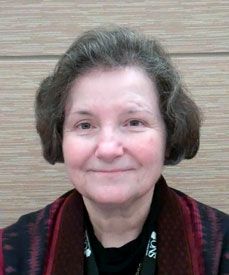What Nurses May Not Know About Lymphedema
Lymphedema is the treatment-induced buildup of extra lymph fluid in tissues that causes discomforting and potentially debilitating swelling of the limbs

ALFP Director Jane M. Armer, RN, PhD
Lymphedema is the treatment-induced buildup of extra lymph fluid in tissues that causes discomforting and potentially debilitating swelling of the limbs. In an abstract presented at the 36th Annual Oncology Nursing Society Congress in Boston, Massachusetts, researchers from the American Lymphedema Framework Project (ALFP) presented their analysis, “What Oncology Nurses May Not Know About Cancer-Related Lymphedema."
Lymphedema is most frequently associated with breast cancer, which ALFP Director Jane M. Armer, RN, PhD, School of Nursing, University of Missouri, Columbia, suggested may simply be due to the disproportionate amount of breast cancer data available. Non-breast cancers associated with lymphedema include genitourinary and head and neck cancers, as well as melanoma.
The ALFP research sought to establish a baseline of knowledge about lymphedema treatment to address a general lack of awareness about managing the condition. Lymphedema is primarily treated by trained therapists, so the ALFP decided to conduct a survey of these experts.
The survey was completed by 419 lymphedema therapists from 46 states. Physical therapists comprised the largest number of respondents and nurses made up the smallest number.
The survey found that the majority of lymphedema patients are being treated in hospital outpatient clinics. A breakdown of anatomical treatment sites included the upper extremities (59%), lower extremities (30%), trunk (16%), head and neck (6%), and genitals (4%).
The survey revealed that comprehensive decongestive therapy (CDT) is the gold standard of primary treatment for lymphedema. Used by 97% of therapists, CDT involves, “Manual lymphatic drainage, compression bandaging, compression garments, self-care teaching about risk reduction and skin care, and a program of exercise,” said Armer. Sixty-eight percent of therapists also reported using soft tissue mobilization, which Armer said is an “advanced technique.”
Armer said the ALFP survey revealed an opportunity for oncology nurses to specialize in lymphedema therapy. She stressed 2 important roles for oncology nurses. The first is patient education on risk reduction and self-care. The other is taking the advanced training and becoming a nurse lymphedema therapist. The recommended training for lymphedema therapists includes 135 hours of classroom and online training.
Regarding the future plans for the ALFP, Armer said they intend to repeat the survey to see what has changed in the field since the initial survey was conducted 2 years ago. This time, the ALFP hopes to survey lymphedema therapists who have “an even broader training background than those that we reached in the first survey,” Armer said. Abstract 1052926



